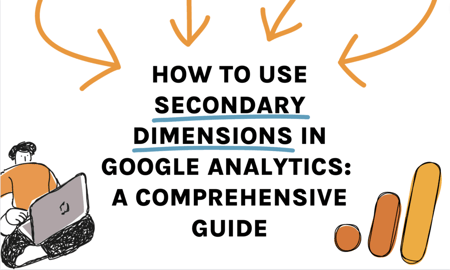Maximizing SEO Efficiency with Secondary Dimensions: Finest Practices
Maximizing SEO Efficiency with Secondary Dimensions: Finest Practices
Blog Article
Transform Your Data Recognizing With Additional Dimensions
Discovering information through the lens of secondary dimensions opens a world of untapped insights, using an extra nuanced point of view on the details of your dataset. By unraveling the layers beneath the surface metrics, you can reveal patterns and partnerships that may have otherwise gone undetected, leading the way for notified decision-making and tactical optimizations. This strategic application of additional dimensions not just enhances your information comprehension yet likewise works as a stimulant for unlocking the full potential of your analytics undertakings.
Benefits of Second Dimensions

By layering extra dimensions onto existing data, companies can examine the effect of different elements on essential metrics, assisting them make more informed choices. On the whole, the utilization of secondary measurements leads to extra informative and durable data evaluation, equipping services to drive calculated actions based on a much deeper understanding of their data.

Just How to Apply Secondary Measurements
To properly apply secondary measurements in information evaluation, services ought to first identify vital variables that straighten with their logical goals and objectives. It is important to consider just how these secondary dimensions will supply extra context and deepness to the key data being evaluated.

Analyzing Data With Secondary Dimensions
Making use of second dimensions in data evaluation enhances the depth and context of understandings acquired from main data. By including second dimensions right into your evaluation, you can acquire a more comprehensive understanding of the partnerships and Website patterns within your information. This process entails examining the primary information through various lenses or point of views, which can reveal surprise correlations or fads that might not be promptly obvious when analyzing the information using just key dimensions.
Assessing information with secondary measurements allows you to sector and group your data in numerous ways, giving a much more nuanced sight of your dataset. secondary dimensions. This segmentation can aid you recognize particular factors that may be affecting the results you are researching. By drilling down right into the data using additional measurements, you can discover beneficial insights that can assist decision-making and strategy advancement
Ideal Practices for Secondary Measurements
When incorporating secondary dimensions right into information evaluation, accuracy in specifying the measurements is essential for drawing out purposeful understandings. It is essential to choose additional dimensions that match the main information effectively.
One more finest method is to prevent redundancy in dimensions. Make sure that get more the second dimensions add brand-new perspectives or information to the evaluation, instead of duplicating information already present in the main dimensions. This will assist avoid confusion and simplify the interpretation of the data.
Additionally, it is essential to consider the scalability of the analysis when choosing second measurements. Select dimensions that can be easily increased or readjusted as needed to accommodate future data requirements or adjustments in logical focus. By following these ideal techniques, experts can optimize the worth of secondary measurements in information analysis and gain much deeper understandings into their datasets.
Making Best Use Of Insights With Additional Measurements
Integrating secondary measurements tactically enhances information analysis by giving a much deeper understanding of the relationships within the dataset (secondary dimensions). By maximizing understandings with additional dimensions, experts can discover beneficial patterns, patterns, and dependencies that might not be instantly evident when taking a look at the data with primary dimensions alone
One key advantage of making use of additional dimensions is the capability to segment and filter data more precisely. This segmentation enables for a more granular analysis of details subsets within the dataset, making it possible for analysts to determine correlations and causations that may have or else been neglected.
In addition, secondary measurements can aid in contextualizing primary information points by adding layers of info that offer a more discover this extensive view of the data. This contextualization is essential for making informed choices based on an alternative understanding of the dataset.
Final Thought
Finally, incorporating additional dimensions in information analysis processes uses a more nuanced and thorough understanding of details, resulting in improved understandings and critical decision-making. By integrating additional variables that align with analytical objectives, concealed trends and connections can be exposed, supplying a much more thorough and contextualized view of data. This approach maximizes the capacity for optimization and uncovers new opportunities within operations.
In general, the usage of additional dimensions leads to more robust and insightful information evaluation, encouraging services to drive calculated activities based on a deeper understanding of their data.
Utilizing secondary dimensions in information evaluation improves the depth and context of insights acquired from key information.Assessing information with additional dimensions allows you to segment and team your information in numerous methods, providing a much more nuanced sight of your dataset.When incorporating second measurements into information analysis, precision in defining the measurements is essential for extracting purposeful understandings. Guarantee that the secondary measurements include new viewpoints or details to the analysis, instead than replicating details currently present in the key dimensions.
Report this page